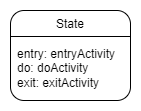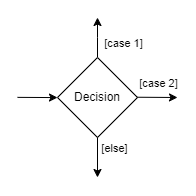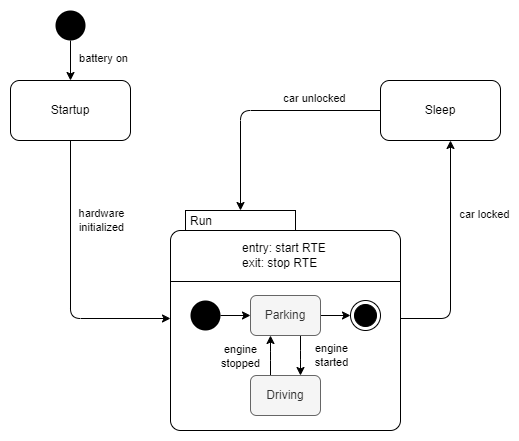Pseudo States |

|
Entry and exit points are used to start and stop the state machine.
The termination point is used for abnormal exiting. |
State |

|
A simple state defines a situation where certain well-defined conditions are valid.
The current state of an object is called active state. |
State Activities |

|
Entry, do and exit activities can be specified within the state element. |
Transition |

|
A transition is a directed relationship that describes a change from source state to target
state (which can be the same state). A transition is triggered by events:
call event: request to execute an operation signal event: asynchronous signal received change event: one or more attribute values of the object changed time event: point in time reached or time passed any receive: any event where the reaction is not specified by other transitions
Events can be ignored, can trigger a state change or can trigger state internal actions
without state change.
|
Sub-State Machine |

|
This element specifies a state which is detailed in another diagram. |
Composite State |

|
Also defines a sub-state machine, but the internal states are modelled directly in the same
diagram. A composite state can have own entry and exit points or the internal states are
directly connected to the other states. |
Decision |

|
Usually a decision is modelled by different transitions from one state to other states.
But in some cases a decision can make a diagram more readable and reduce complexity. |
Fork and Join |

|
This can be used to model parallel states in different threads, cores, etc. |

